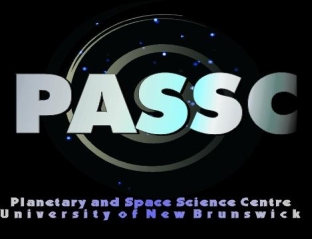|
Moon |
Mercury |
Venus |
Mars |
Asteroids |
Jupiter |
Saturn |
Uranus |
Neptune |
Pluto
MERCURY

Missions to the Mercury: Past, Present and Future
The following table lists all missions to the Jupiter, including those that failed, starting with the most recent. The table is colour coded to reflect the lead country or space agency, and missions are listed by launch date. The RPIF, here at UNB holds data and images from many of the NASA led missions.
Any questions or comments please
Contact PASSC.
Red - USSR or Russian led missions
Blue - NASA led missions
Purple - Japanese Space Agency led missions
Green - European Space Agency led missions
Yellow - China National Space Administration led missions
Orange - Indian Space Research Organization
Launch Date |
Mission |
Success |
Type |
Instruments |
Goals |
Database |
08/2015 |
BepiColumbo |
|
Orbiter(s) |
Mercury Planetary Orbiter:
-wide-angle and narrow angle cameras
-infrared spectrometer
-ultraviolet spectrometer
-gamma, X-ray, and neutron spectrometers
-laser altimeter
-Near Earth Object telescope and detection system
-radio science experiments
Mercury Magnetospheric Orbiter:
-fluxgate magnetometers
-charged particle detectors
-wave receiver
-positive ion emitter
-imaging system |
-to study Mercury's form, interior structure, geology, composition, and craters, origin, structure, and dynamics of its magnetic field, composition and dynamics of the vestigial atmosphere, test Einstein's theory of general relativity, search for asteroids sunward of Earth, and to generally study the origin and evolution of a planet close to a parent star
-Co-mission with Japanese Aerospace Exploration Agency
|
Yes |
08/2004 |
|
Success |
Orbiter |
-Mercury dual imaging system (MDIS)
-gamma-ray and neutron spectrometer (GRNS)
-X-ray spectrometer (XRS)
-Mercury laser altimeter (MLA)
-atmospheric and surface composition spectrometer (MASCS)
-energetic particle and plasma spectrometer (EPPS)
-magnetometer (MAG)
-radio science (RS) experiments
|
to study the characteristics and environment of Mercury from orbit; specifically, the scientific objectives of the mission are to study the surface composition, geologic history, core and mantle, magnetic field, and tenuous atmosphere of Mercury, and to search for water ice and other frozen volatiles at the poles over a nominal orbital mission of one Earth year |
Yes |
11/1973 |
Mariner10 |
Success |
Flyby |
-TV photography
-celestial mechanics and radio science
-scanning electrostatic analyzer and electron spectrometer
-triaxial fluxgate magnetometer
-extreme UV spectrometer
-two-channel IR radiometer
-energetic particles experiment
|
to measure Mercury's environment, atmosphere, surface, and body characteristics; to perform experiments in the interplanetary medium and to obtain experience with a dual-planet gravity-assist mission
the first and only spacecraft to visit Mercury to date; it was confirmed that Mercury had no atmosphere and a cratered, dormant Moon-like surface was shown in the images; Mercury was shown to have a small magnetic field and a relatively large iron-rich core
|
Yes |
|
